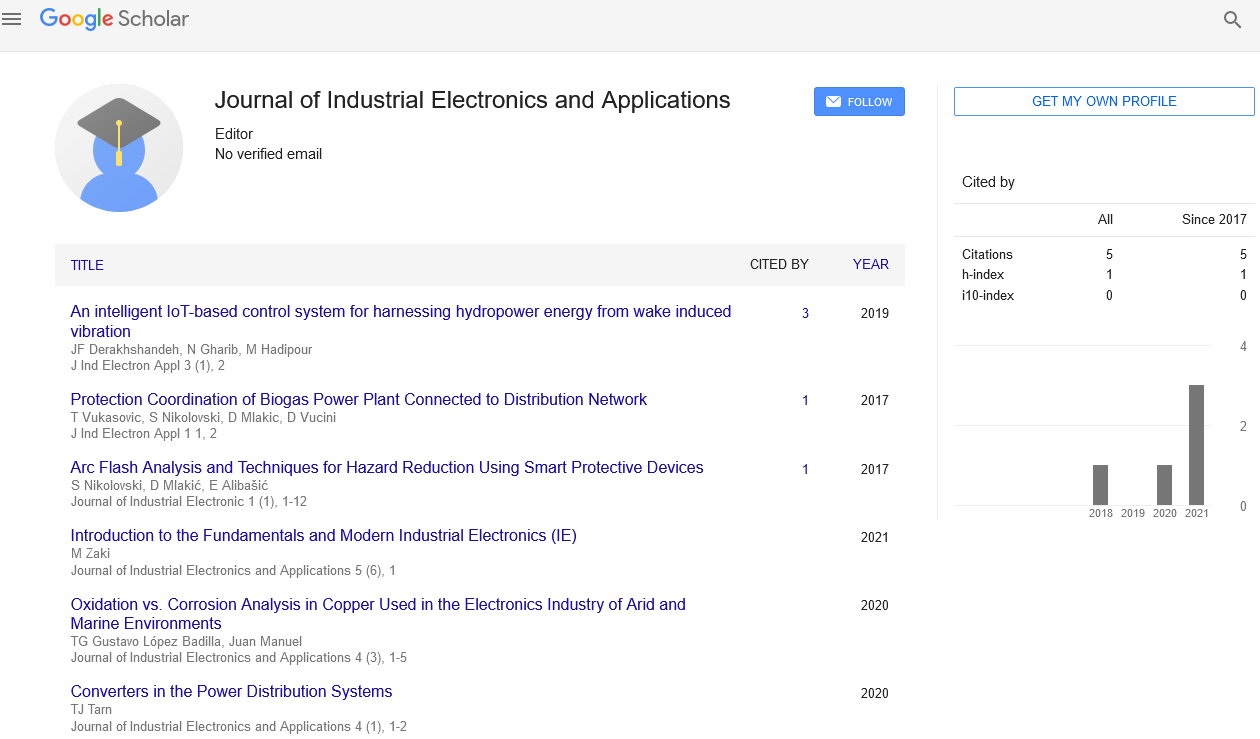Perspective, J Ind Electron Appl Vol: 7 Issue: 1
Field of Power Electronics and their Principles, Applications, and Future Developments
Srete Jujkie*
1Department of Industrial Engineering, University of Salerno, Fisciano, Italy
*Corresponding Author: Srete Jujkie
Department of Industrial Engineering, University of Salerno, Fisciano, Italy
E-mail: Jujkie23@hotmail.com
Received date: 24 February, 2023, Manuscript No. JIEA-23-95918;
Editor assigned date: 28 February, 2023, PreQC No. JIEA-23-95918(PQ);
Reviewed date: 13 March, 2023, QCNo JIEA-23-95918;
Revised date: 21 March, 2023, Manuscript No. JIEA-23-95918 (R);
Published date: 30 March, 2023, DOI: 10.4172/JIEA.1000019.
Citation: Jujkie S (2023) Field of Power Electronics and their Principles, Applications, and Future Developments. J Ind Electron Appl 7:1.
Description
Power electronics is a field of engineering that deals with the conversion, control, and distribution of electrical power. The field is concerned with the design and development of devices and systems that can efficiently convert and control electrical energy from one form to another. This study provides an introduction to the field of power electronics, discussing its history, principles, applications, and future developments.
Power electronics is a rapidly growing field of engineering that has revolutionized the way electrical energy is converted, controlled, and distributed. The field encompasses a range of technologies and applications, from small-scale devices such as laptop chargers and mobile phone adapters to large-scale power systems that supply electricity to homes, businesses, and industries. In this study, we will discuss the principles of power electronics, its history, applications, and future developments.
Principles of power electronics
The main principle of power electronics is to convert electrical energy from one form to another, such as AC to DC or DC to AC. This is achieved through the use of power electronic devices such as diodes, transistors, thyristors, and integrated circuits. These devices are designed to handle high power levels and operate at high frequencies, enabling efficient and reliable conversion of electrical energy. Power electronics also involves the control and regulation of electrical energy, which is achieved through the use of feedback and control systems.
The field of power electronics emerged in the 1950s with the development of solid-state devices such as diodes and transistors. These devices enabled the development of power converters that could efficiently convert AC to DC and vice versa. In the 1960s, the development of thyristors further expanded the capabilities of power electronics, allowing for the control and regulation of power systems. The field continued to evolve in the following decades with the development of new devices and technologies such as integrated circuits, power modules, and digital control systems.
Applications: Power electronics is used in a wide range of applications, from small-scale consumer electronics to large-scale power systems. Consumer electronics such as laptops, mobile phones, and televisions rely on power electronics to convert AC to DC for charging and operation. Power electronics is also used in renewable energy systems such as solar panels and wind turbines, where it is used to convert DC power to AC for use in the electrical grid. In industrial applications, power electronics is used in motor control systems, power supplies, and high-voltage DC transmission systems.
Future developments: The field of power electronics is constantly evolving, with new technologies and applications being developed all the time. One area of focus is the development of more efficient and reliable power converters, which can help reduce energy consumption and improve the efficiency of electrical systems. Another area of focus is the development of power electronics for electric vehicles, which is expected to grow rapidly in the coming years. The use of widebandgap semiconductors such as silicon carbide and gallium nitride is also expected to increase, offering higher efficiency and higher power density in power electronics devices.
Conclusion
Power electronics is a field of engineering that has revolutionized the way electrical energy is converted, controlled, and distributed. The principles of power electronics involve the conversion, control, and regulation of electrical energy through the use of high-power devices and systems. Power electronics is used in a wide range of applications, from consumer electronics to large-scale power systems. The field is expected to continue to evolve rapidly in the coming years, with new technologies and applications being developed to improve the efficiency and reliability of electrical systems.
 Spanish
Spanish  Chinese
Chinese  Russian
Russian  German
German  French
French  Japanese
Japanese  Portuguese
Portuguese  Hindi
Hindi 